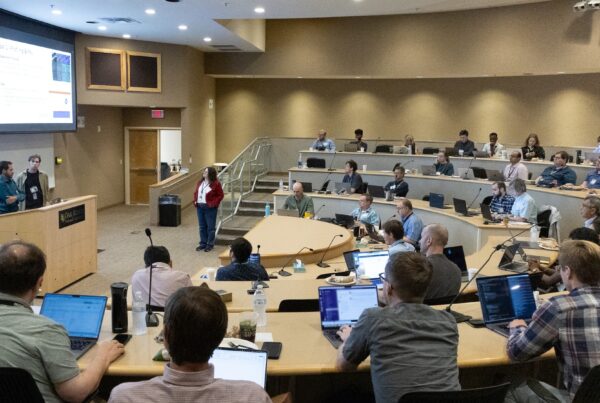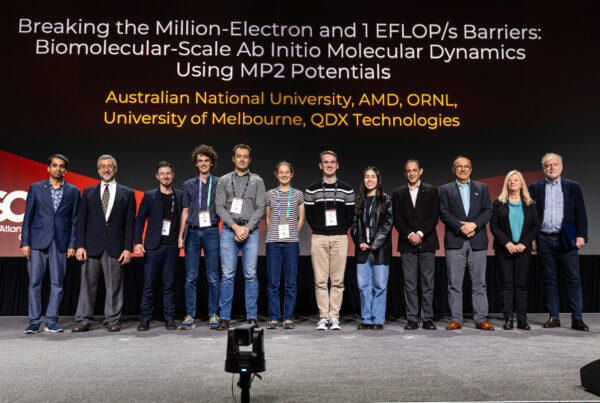Staff drop in on leading GPU conference to learn, educate
Staff members from the OLCF recently made a trip to the West Coast to both attend and contribute to the world’s leading conference on graphics processing units, or GPUs.
The OLCF’s Titan supercomputer, currently ranked as the world’s fastest, uses GPUs to help crunch the massive amounts of data it processes in solving some of the world’s most pressing scientific challenges, from climate change to materials to astrophysics, to name a few.
The GPU Technology Conference (GTC) took place in San Jose, California, from March 18-21.
GTC advances global awareness of GPU computing, computer graphics, visualization, game development, mobile computing, and cloud computing, and their importance to the future of science and innovation. Through world-class education, including hundreds of hours of technical sessions, tutorials, panel discussions, and moderated roundtables, GTC brings together thought leaders from a wide range of fields, including high-performance computing.
OLCF representatives included Director of Science Jack Wells, Director of Operations Jim Rogers, and User Assistance Specialists Suzanne Parete-Koon and Fernanda Foertter.
Foertter and Wells gave a talk describing the OLCF, Titan, and the early science phase ongoing on Titan. The early science phase consists of a select group of research teams granted early access to Titan’s GPUs in an effort to maximize future users’ allocations.
“The feedback was great. We met a lot of new people who wanted to collaborate on heterogeneous computing training. We also met with users like Balint Joo and with NVIDIA collaborators and counterparts,” said Foertter, adding that these relationships will only help users gain even more from their time on Titan.
On Titan’s hybrid CPU/GPU architecture, GPUs can crunch millions of the simpler operations, freeing up the traditional CPUs to sort through the more complex math. With this unique hardware combination, Titan is capable of a peak performance of 27 petaflops, allowing researchers to simulate more complex systems in shorter timeframes, a key metric in accomplishing scientific breakthroughs.
“GTC had a number of hands-on labs featuring tutorials about how to expose parallelism in Fortran and C codes for the purpose of generating better kernels for the GPU,” said Parete-Koon. “We immediately used the knowledge we gained to develop a set of our own tutorials for seminars that we recently taught for the University of Tennessee Knoxville’s Computational Physics Class.”—by Leah Moore






